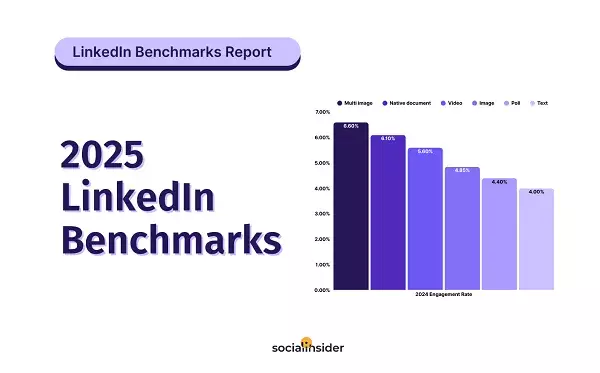In recent years, the professional networking platform LinkedIn has morphed into an indispensable tool for companies and brands. The metamorphosis has accelerated, especially in the wake of the significant shifts occurring on Twitter, now rebranded as X. As organizations scramble to capture attention in a fragmented social media universe, LinkedIn has emerged as a beacon of strategic opportunity. With the latest data indicating escalating engagement levels across various post types, brands may find a goldmine of potential waiting to be tapped.
Understanding the Engagement Metrics
An insightful study by Socialinsider, which analyzed over one million posts from about 9,000 company profiles, provides a treasure trove of statistics that paint a vivid picture of what succeeds on LinkedIn. One standout finding reveals that carousel posts lead the pack in engagement. By allowing users to swipe through multiple images or pieces of content, these formats create a more interactive experience, enticing viewers to invest their time.
It’s essential, however, to scrutinize these findings further. While Socialinsider’s results shine a spotlight on carousels and document attachments, LinkedIn’s own data presents a slightly different narrative, claiming that video content garners 1.4 times more engagement on average. Herein lies a critical consideration—LinkedIn’s statistics encompass a broader spectrum, including personal accounts, whereas Socialinsider’s pool was limited to company pages. This subtle differentiation could lead to divergent interpretations of the same data set.
The Clash of the Titans: Carousel vs. Video
The debate of carousel versus video is not merely an academic exercise; it holds significant implications for brands looking to refine their content strategies. It’s tempting for companies to latch onto the latest “best practices” without considering the nuances of their own audience’s preferences. For instance, while carousels might be the hottest trend currently, does that mean video should be cast aside? Absolutely not. Each format serves a purpose, and a balanced approach that includes compelling stories told through video, alongside eye-catching carousels, is likely to yield the best results.
Brands need to remember that the success of any post type heavily relies on its alignment with the values, interests, and needs of their target audience. Simply posting a carousel because it has the “most engagement” isn’t sufficient if the content fails to resonate.
Tilting the Scale: The Power of Polls and Images
Another key takeaway from Socialinsider’s analysis is the substantial role of polls in attracting impressions. They foster interaction and spark dialogue, compelling followers to engage actively with the content. Polls not only unveil audience preferences but also help establish a connection between brands and their audience, transforming passive viewers into engaged participants.
Similarly, image and link posts have remained prevalent on company pages. The recent modifications to LinkedIn’s link preview format, which now favors larger images in promoted posts, may be impacting this trend. Companies are naturally drawn to formats that stand out, and it’s clear that larger visuals create a more compelling in-feed presence, prompting brands to experiment with traditional image posts instead of standard link-sharing.
Embracing Small Pages for Explosive Growth
As larger brands vie for attention in a saturated market, smaller pages have exhibited remarkable follower growth. Why is this happening? The answer lies in authenticity and niche targeting. Smaller brands often find it easier to cultivate a genuine connection with their audience, leading to organic follower expansion. They lean into storytelling and personal engagement, making their messaging more relatable and impactful.
As larger companies grapple with navigating corporate personas, these small-to-midsize businesses are leveraging their agility to forge connections that matter. Increased follower growth is not merely a numbers game; it signifies a potential for deeper relationships that larger enterprises may struggle to cultivate in the same way.
In sum, as the digital landscape continues to evolve, agents of change like LinkedIn are heralding new opportunities for brands. Understanding and adapting to the dynamics of engagement is no longer optional but essential for success in the professional realm.

